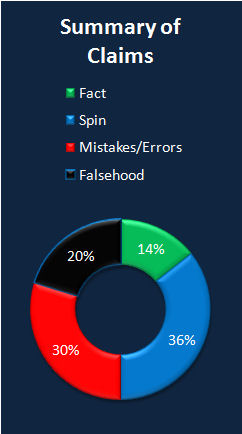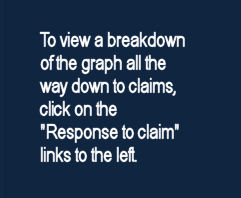FAIR Answers—back to home page
Response to "Losing a Lost Tribe: Native Americans, DNA, and the Mormon Church"
Response to claims made in "Losing a Lost Tribe: Native Americans, DNA, and the Mormon Church" by Simon G. Southerton
Jump to Subtopic:
- Response to claims made in Losing a Lost Tribe, "Introduction"
- Response to claims made in Losing a Lost Tribe, "Chapter 1: A Chosen Race in a Promised Land"
- Response to claims made in Losing a Lost Tribe, "Chapter 2: Race Relations in Colonial America"
- Response to claims made in Losing a Lost Tribe, "Chapter 3: Lamanites in the Latter Days"
- Response to claims made in Losing a Lost Tribe, "Chapter 4: The Lamanites of Polynesia"
- Response to claims made in Losing a Lost Tribe, "Chapter 6: Science and the First Americans"
- Response to claims made in Losing a Lost Tribe, "Chapter 9: The Outcasts of Israel"
- Response to claims made in Losing a Lost Tribe, "Chapter 10: The Lord's University"
- Response to claims made in Losing a Lost Tribe, "Chapter 11: Plausible Geography"
- Response to claims made in Losing a Lost Tribe, "Chapter 12: Faith Promoting Science"
- Response to claims made in Losing a Lost Tribe, "Chapter 13: LDS Molecular Apologetics"
- Response to claims made in Losing a Lost Tribe, "Chapter 14: Moving the Spirit"
- Source Analysis of "Losing a Lost Tribe: Native Americans, DNA, and the Mormon Church," Sorted by Page Number
- About this work
Jump to Subtopic:
Jump to Subtopic:
Jump to Subtopic:
Jump to Subtopic:
Jump to Subtopic:
Jump to Subtopic:
Jump to Subtopic:
Jump to Subtopic:
Jump to Subtopic:
Jump to Subtopic:
Jump to Subtopic:
Jump to Subtopic:
Summary: An examination and response to how the author of Losing a Lost Tribe: Native Americans, DNA, and the Mormon Church interprets the sources used to support this work, indexed by page number.
About this work
- 1984: One problem some Latter-day Saint writers and lecturers have had is confusing the actual text of the Book of Mormon with the traditional interpretation of it. For example, a commonly heard statement is that the Book of Mormon is “the history of the American Indians.” This statement contains a number of unexamined assumptions—that the scripture is a history in the common sense—a systematic, chronological account of the main events in the past of a nation or territory; that “the” American Indians are a unitary population; and that the approximately one hundred pages of text containing historical and cultural material in the scripture could conceivably tell the entire history of a hemisphere. When unexamined assumptions like these are made, critics respond in kind, criticizing not the ancient text itself, but the assumptions we have made about it.
- —Dr. John L. Sorenson, "Digging into the Book of Mormon: Our Changing Understanding of Ancient America and Its Scripture," Ensign, September, 1984 (The presentation of the limited geography theory in the official Church magazine) (emphasis added)
Losing a Lost Tribe was published some twenty years after Dr. Sorenson made the statement above. Dr. Sorenson's warning about the critics responding to the "traditional interpretation" of the Book of Mormon, rather than to the text itself, appears to have been fulfilled in this work. Ironically, out of the eight works authored by Dr. Sorenson that Dr. Southerton quotes as references on pages 249–250, the Ensign article quoted above is not included among them. The author clarified in September 2008 that the focus of the debate is not about the genetic origin of Native Americans, but the LDS theology associated with it. Indeed, a full third of Losing a Lost Tribe is devoted to a discussion of what the author calls The Troubled Interface Between Mormonism and Science, and the role of FAIR, the Maxwell Institute (formerly FARMS) and LDS apologists.
Quotes by the Author
- 2004
- My wish is not to offend or to offer advice in matters of faith.
- —Dr. Simon Southerton, Losing a Lost Tribe, p. viii.
- 2008
- Here are some of the stars in the current apologetic circus juggling dubious claims in support of the Book of Mormon's historicity.
- —Dr. Simon Southerton, "Cirque Du Apologetique - starring Sasquatch and UFOs", posted to anti-Mormon discussion board, July 11, 2008.
- 2004
- ...most Native American Latter-day Saints throughout the Americas regard the Israelite Lehi to be a blood relative.
- —Dr. Simon Southerton, Losing a Lost Tribe, p. 37.
- 2005
- In 600 BC there were probably several million American Indians living in the Americas. If a small group of Israelites entered such a massive native population it would be very, very hard to detect their genes 200, 2000 or even 20,000 years later. But does such a scenario fit with what the Book of Mormon plainly states or what the prophets have taught for 175 years? Short answer. No! Long answer. Nooo!
- —Dr. Simon Southerton, posting to an anti-Mormon discussion board, Feb. 15, 2005 (emphasis added)
- 2008
- They also set up the straw man that I am arguing that according to the Book of Mormon all American Indians are descended from Hebrews. I have never claimed this. The vanishing geography theory is utter desperation.
- —Dr. Simon Southerton, posting to an anti-Mormon discussion board, July 5, 2008. (emphasis added)
- 2008
- In case anyone from FAIR is unclear I will repeat what I wrote four years ago…“IF A SMALL GROUP OF ISRAELITES ENTERED SUCH A MASSIVE NATIVE POPULATION (SEVERAL MILLIONS) IT WOULD BE VERY, VERY HARD TO DETECT THEIR GENES.” Now that FAIR has finally conceded that American Indian DNA is essentially all derived from Asia, I also agree with them that the debate should be about the theology.
- —Dr. Simon Southerton, "Finally, I agree with LDS scientists-apologists," posting to an ex-Mormon discussion board, Sept. 6, 2008. (emphasis in original)
- 2014
- I made the original statement at a time when whole genome sequence analysis was a long way off. It's true that if a small group (say 10 people) entered a massive population (say 1 million), that it would be hard to detect their mitochondrial or Y chromosome DNA. Your odds would be roughly 1 in 100,000 (10 in 1 Million). But technology has moved very rapidly and whole genome studies are now almost routine. So, my original statement is no longer true.
- —Dr. Simon Southerton, explaining his 2008 statement to FAIR, February 2014.
Reviews of this work
Kevin L. Barney,
FairMormon PapersMurphy and Southerton appear to be nice guys. They are sincere, and they believe in what they are doing. Both seem to have had a similar experience. They apparently grew up with narrow, fundamentalist assumptions about the Book of Mormon, believing in and presumably knowing only of the hemispheric model. When they learned that the hemispheric model was scientifically untenable, each experienced unfulfilled (unrealistic) expectations and an ensuing crisis of faith, upon which each lost his belief in the antiquity and historicity of the Book of Mormon, and the Church with it.1 Now they desire to enlighten others under the banner of science.
Ryan Parr,
The FARMS Review, (2005)
According to a widely circulated media piece, "Plant geneticist Simon Southerton was a Mormon bishop in Brisbane, Australia, when he woke up the morning of Aug. 3, 1998, to the shattering conclusion that his knowledge of science made it impossible for him to believe any longer in the Book of Mormon."[2] He now claims that the Book of Mormon is strictly a fictitious invention composed and orchestrated by Joseph Smith—with no inspiration, no angels, no revelation (he remains silent about Joseph's motives). However, Southerton strives to explain the scientific rationale supporting his feelings (although, incidentally, individuals belonging to the Church of Jesus Christ of Latter-day Saints are criticized for using their feelings as a criteria of belief; pp. 44-45). He draws heavily on current population genetics data of Native Americans and Polynesians, specifically mitochondrial DNA (mtDNA) and Y chromosome information, which he insists indicates an Asian, as opposed to an ancient Near Eastern origin for these groups. In addition, he proposes that Latter-day Saint scholars, particularly those associated with the Foundation for Ancient Research and Mormon Studies (FARMS), are attempting to alter what he considers official church views that Native Americans and Polynesians are exclusively descendants of those groups described in the Book of Mormon. He argues that the Latter-day Saint view of Native American ancestry is being changed not by revelation but by contemporary research.
Further reading
DNA and the Book of Mormon
- David A. McClellan, "Detecting Lehi's Genetic Signature: Possible, Probable, or Not?," FARMS Review 15/2 (2003): 35–90. off-site
- D. Jeffrey Meldrum and Trent D. Stephens, "Who Are the Children of Lehi?," Journal of Book of Mormon Studies 12/1 (2003). [38–51] link
- Matthew Roper, "Nephi's Neighbors: Book of Mormon Peoples and Pre-Columbian Populations," FARMS Review 15/2 (2003): 91–128. off-site
- Matthew Roper, "Swimming the Gene Pool: Israelite Kinship Relations, Genes, and Genealogy," FARMS Review 15/2 (2003): 129–164. off-site
- John L. Sorenson and Matthew Roper, "Before DNA," Journal of Book of Mormon Studies 12/1 (2003). [6–23] link (Key source)
- John A. Tvedtnes, "Reinventing the Book of Mormon (Review of: “Reinventing Lamanite Identity,” Sunstone, March 2004, 20–25)," FARMS Review 16/2 (2004): 91–106. off-site
- Michael F. Whiting, "DNA and the Book of Mormon: A Phylogenetic Perspective," Journal of Book of Mormon Studies 12/1 (2003). [24–35] link (Key source)



